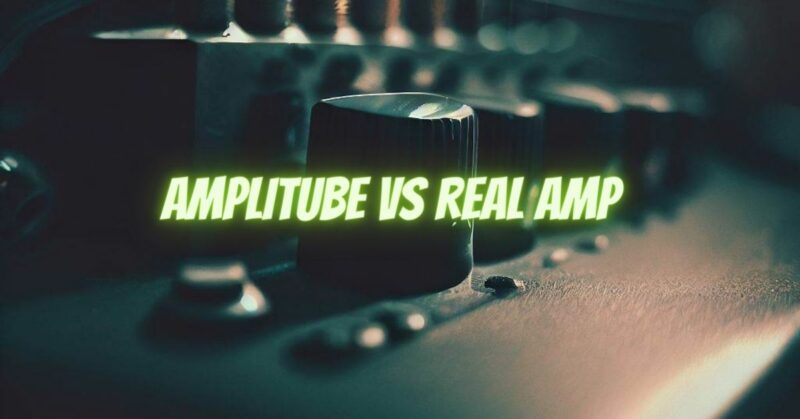The comparison between digital amp simulation software, like Amplitube, and traditional real amplifiers has ignited discussions within the music community. Amplitube offers a virtual array of amps, effects, and cabinets, while real amps provide an authentic analog experience. Both options have their unique advantages and challenges, and understanding their nuances can help you make an informed decision about which approach suits your musical goals. In this article, we’ll explore the differences between Amplitube and real amplifiers, guiding you through the sonic spectrum of each option.
Amplitube: Digital Versatility
Advantages:
- Versatile Sound Palette: Amplitube provides a vast selection of amp models, effects, and cabinets, granting access to a wide range of tones from classic to modern.
- Affordability and Convenience: Amplitube is cost-effective compared to amassing a collection of real amplifiers and pedals. Its digital nature allows easy integration into recording setups and DAWs.
- Portability: With Amplitube, you can carry a multitude of gear simulations on your laptop, making it suitable for musicians on the go.
- Direct Recording: Amp simulators like Amplitube facilitate direct recording without the need for miking physical amplifiers, simplifying the recording process.
Challenges:
- Dynamic Sensitivity: While Amplitube has improved dynamic response, it may struggle to replicate the intricacies of touch-sensitive playing dynamics.
- Harmonic Authenticity: The harmonic richness and natural distortion produced by real amplifier components might not be fully captured by Amplitube.
- Tonal Interaction: The tactile experience of adjusting physical knobs and switches is absent with Amplitube, potentially impacting the sense of direct interaction.
Real Amps: Analog Soul
Advantages:
- Tonal Authenticity: Real amplifiers offer an authentic and organic sound characterized by the harmonic complexity of analog components.
- Dynamic Response: The interaction between player technique and the amp’s circuitry yields dynamic and expressive responses difficult to replicate digitally.
- Physical Interaction: Adjusting physical knobs, switches, and controls fosters a tangible connection between musician and gear.
Challenges:
- Cost and Maintenance: Real amplifiers can be costly to acquire and maintain, involving expenses for tubes, repairs, and servicing.
- Flexibility: Real amplifiers offer a limited range of tonal options compared to Amplitube, potentially requiring an extensive collection of physical gear for variety.
Balancing Convenience and Authenticity
The choice between Amplitube and real amplifiers hinges on your priorities, the music you create, and the context in which you perform or produce. Amplitube offers digital versatility, cost-effectiveness, and the ability to explore a wide tonal range without requiring dedicated space. Real amplifiers, however, provide an irreplaceable analog warmth, dynamic sensitivity, and stage presence that resonate with many musicians.
Consider your tonal preferences, your workflow, and the type of performances you engage in. Some artists blend both worlds, utilizing Amplitube for convenience and experimentation while reserving real amplifiers for the authenticity they provide.
In the end, the decision rests on your sonic aspirations and practical requirements. Amplitube’s continuous advancements in emulation technology are narrowing the gap between digital simulations and real amps, offering musicians a vast sonic palette to express their musical vision.


